
Entrance to the Mary Livingston Ripley Garden on the National Mall
[Second in a series on Smithsonian Gardens; introduction here, and part 1 here]
The Mary Livingston Ripley Garden, tucked into a narrow space between two Smithsonian museums, the Arts and Industries Building (closed for renovations since 2006) and the Hirshhorn Museum, is one of the Smithsonian's smallest but it's one of my favorite gardens in Washington, DC. Like the Butterfly Habitat Garden, this oasis just off the National Mall is easy to miss, and tourists focused on the memorials, monuments, and museums will walk right by it without ever knowing it's there.
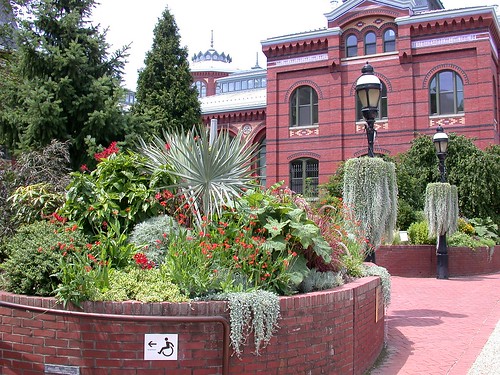
Sunny entrance bed with Arts and Industries Building in the background
The entrance is wide and inviting, flanked by two raised beds, and opens to a bright courtyard with a fountain. From here, bricked paths meander through a garden with both sunny areas and shaded beds under mature trees, with benches inviting visitors to stop and stay a while. Originally designed by Hugh Newell Jacobsen, the gently curving lines and exuberant, informal gardens contrast with the rather formal Arts and Industries Building that provides a backdrop to the garden.
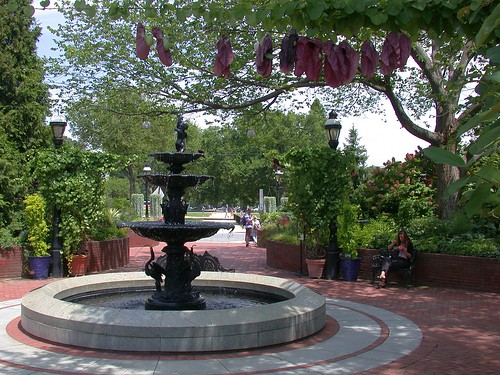
Courtyard and fountain
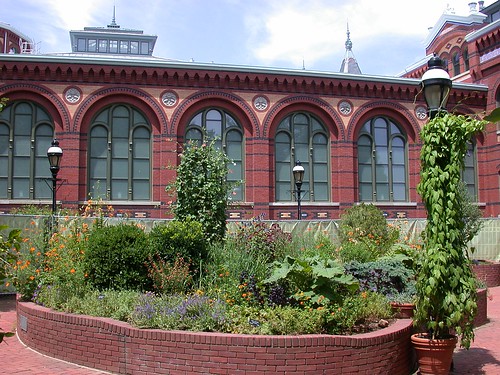
Arts and Industries Building provides a formal backdrop
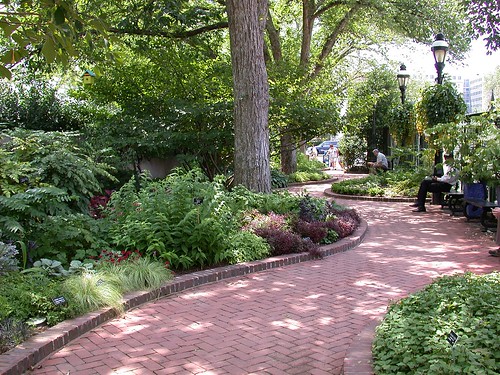
Shady beds are relaxing and peaceful on a sunny day
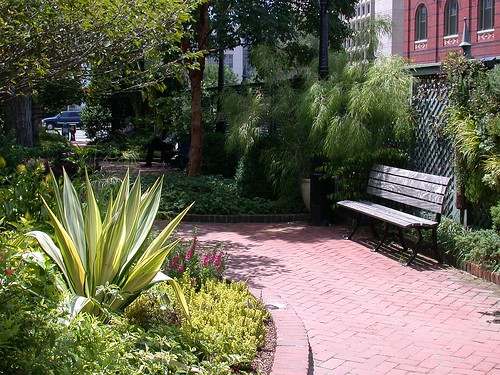
Sunny bench
The garden was originally conceived by Mary Livingston Ripley, "an accomplished entomologist and photographer as well as a horticulturist" who also happened to be the wife of S. Dillon Ripley, Secretary of the Smithsonian Institution from 1964 to 1984. In 1978 it received support from the Smithsonian Women's Committee and in 1988 they named the garden after her.
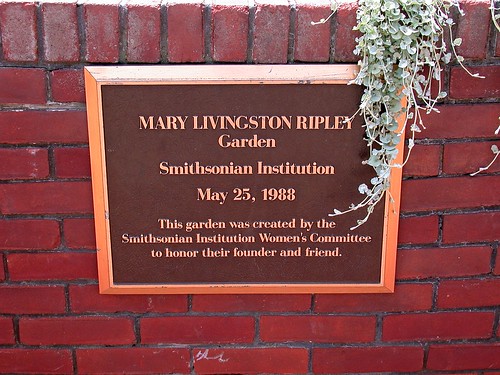
Plaque at entrance
More than most of the Smithsonian's gardens, the Ripley Garden represents the horticultural expression and expertise of one particular person, Smithsonian Horticulturist Janet Draper. Nearly all of the work, year-round, is done by Janet, with the assistance of volunteer Ann Balch. One thing Janet stressed to me was that only 18 full-time gardeners are responsible for all the Smithsonian gardens on the Mall. Janet has tended this garden for 16 years and spends much of her time working in the garden during regular weekday business hours, allowing her to meet and chat with visitors. In keeping with the Smithsonian's mission, "the increase and diffusion of knowledge", Janet spends much of her time answering questions and educating the public on plants and gardening.
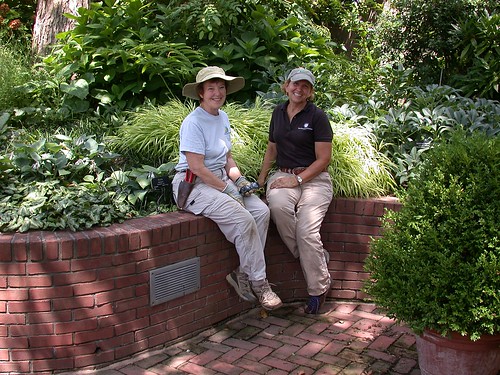
Janet Draper with assistant Ann Balch in the Ripley Garden
Janet loves to talk about plants and is happy to answer any and all questions. When I visited the garden on a beautiful August day, I found Janet patiently explaining to a child the "trap-and-release" pollination mechanism of Aristolochia. Listening in, it was obvious that Janet finds this plant fascinating and loves telling people about its rather peculiar flowers. In fact, I've found Janet to be happy to talk about just about any plant, but the more unusual or obscure, the better!
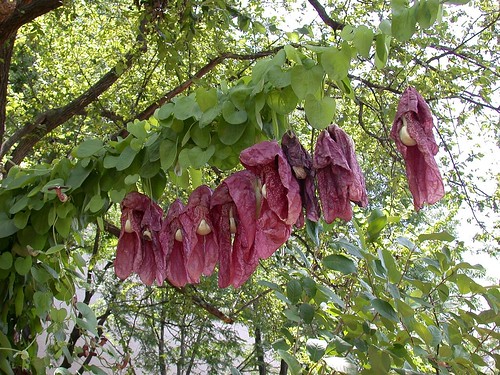
Aristolochia brasiliensis
Janet explains Aristolochia grandiflora pollination (video via Smithsonian Gardens)
One of the most-remarked plants is a coleus (a.k.a. Solenostemon scutellarioides, Plectranthus scutellarioides) with glossy, deep purple, nearly black leaves. There seems to be some confusion as to whether the correct name is 'Shiny Shoes' or 'Black Patent Leather' but either way, it's completely different from any other coleus I've ever seen. This is not a plant for the shade! Like many of the more recently introduced coleus, it seems to do best in full sun.
The other most-remarked plant is Solanum quitoense, a tomato relative from Ecuador with large leaves, vicious spines, and fuzzy but edible fruits.

Coleus 'Black Patent Leather' or 'Shiny Shoes'
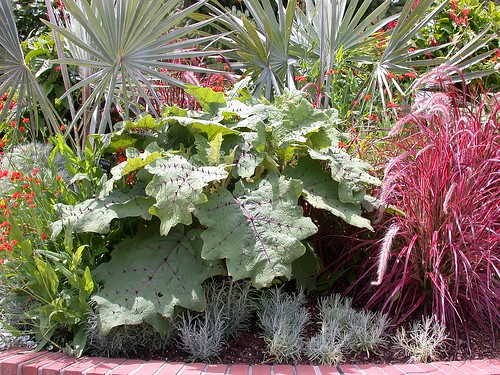
Solanum quitoense, Naranjilla
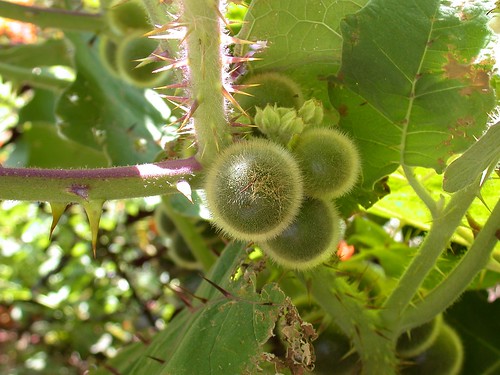
Fruits of Solanum quitoense
The garden hasn't been without its challenges. In January 2009, during the first inauguration of President Obama, barriers protecting the gardens were knocked over and the beds were trampled by the hordes of visitors. Janet also lost much of her garden space during renovation work on the Arts and Industries Building, but most of the exterior work is now finished and she's gotten some of her gardens back. Under Janet's guidance, the Ripley Garden has sprung back from all of these challenges and just gets better and better.
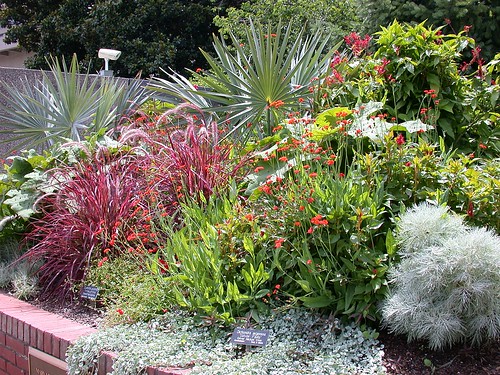
Contrasts in color and texture
I think I love the Ripley Garden so much because it's not a neat and tidy garden; this is a densely planted garden, bursting at the seams with an irrepressible exuberance, much like Janet herself. The garden displays a huge diversity of plants, including perennials, annuals, hardy and tender bulbs, and tropicals, many of them rare or unusual, with strongly contrasting bright colors and bold textures. This exuberance tones down a bit in the shadier sections, providing a sense of intimacy, almost secrecy; it's a great place to eat lunch or otherwise relax, just steps away from the bustling masses of tourists on the Mall but apparently overlooked by most of them. The serenity belies the huge amount of work that goes into planning, planting, and maintaining a garden like this. Next time you see Janet or one of the other gardeners working, take a moment to let them know how much you appreciate their efforts!
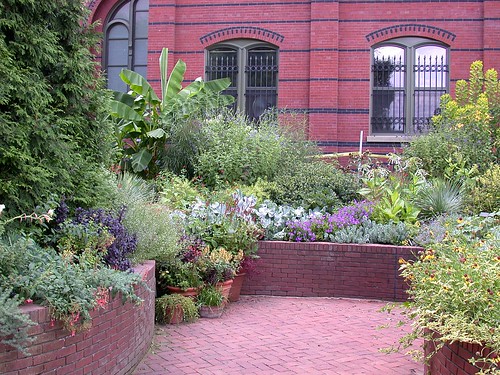
Musa basjoo, hardy banana
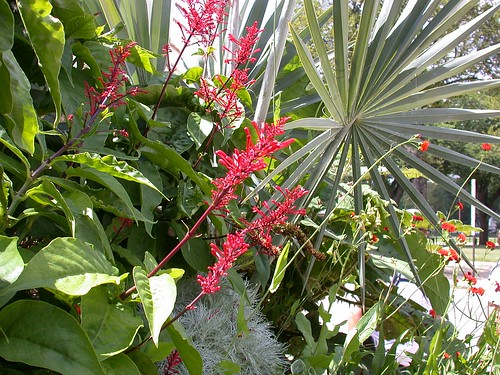
Odontonema sp.
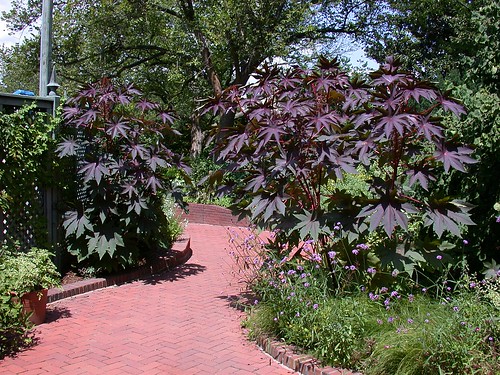
Ricinus communis (castor bean) self-sows, appearing in a different place from year to year
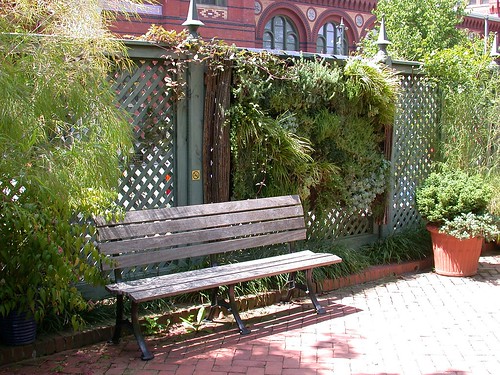
"Living wall"
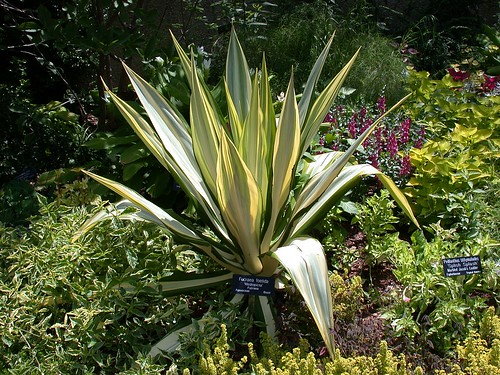
Furcraea foetida 'Mediopicta'
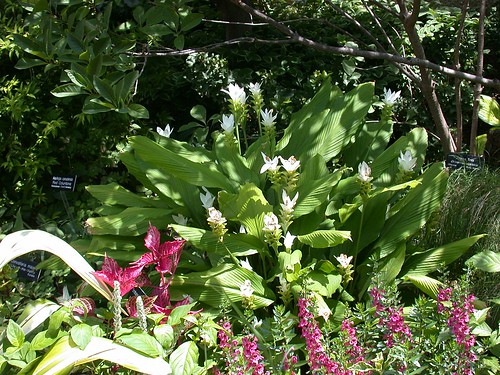
Smithatris myanmarensis (better photo from a previous year here)

Emilia coccinea, tassel flower
Like any living, growing thing, the Ripley Garden changes from season to season, and from year to year. Next time you're on the National Mall, be sure to check it out. Janet is always trying new and different plants and you might be surprised by what you find!
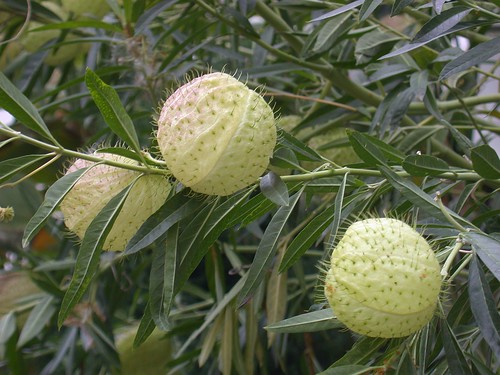
Fruits of Gomphocarpus (Asclepias) physocarpus, "hairy balls milkweed" (October 2009)
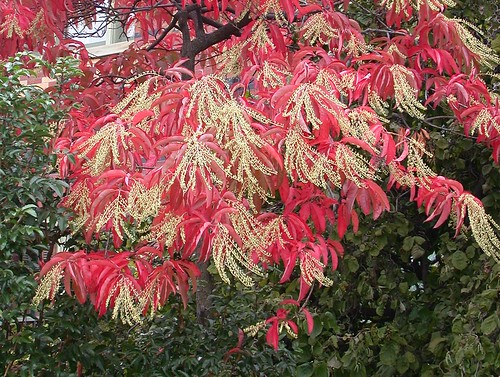
Fall foliage of Oxydendrum arboreum, sourwood (October 2009)
Click here to go to part 3: Enid A. Haupt Garden
Resources
Smithsonian Gardens website
Smithsonian Gardens on Facebook
Mary Livingston Ripley Garden
The Best Little Garden in DC, and the Plant Geek who Tends It (Susan Harris, Garden Rant)
First Person Singular: Smithsonian horticulturist Janet Draper (K.K. Ottesen, Washington Post)
For my full set of photos, click here: Smithsonian Ripley Garden 2014
Did you like this post? Please click on the share buttons below to share on Facebook, Twitter, or Pinterest!

The consistent use of red bricks on the pathway and raised bed, complementing the red brick building adjacent to it really sets off the planting very well. Very well though of planting scheme to a beautiful result!
ReplyDeleteI forgot to mention that this garden was originally created to be wheelchair accessible, with the raised beds bring the plants up to eye level. All told, a beautiful, beautiful garden!
DeleteWhat a cool garden full of great plants! Janet is doing a marvelous job here. What a terrific gig, gardening and talking about plants all day! The amount of work to pull out all the tender plants in the fall and replant with things for winter interest has my head spinning!
ReplyDeleteI am in awe of Janet, and she's just an all-around nice person as well. I can't imagine the amount of work that goes into this. She does have the assistance of the other gardens staff, but it's still a huge amount of work and she does much of her herself.
Delete